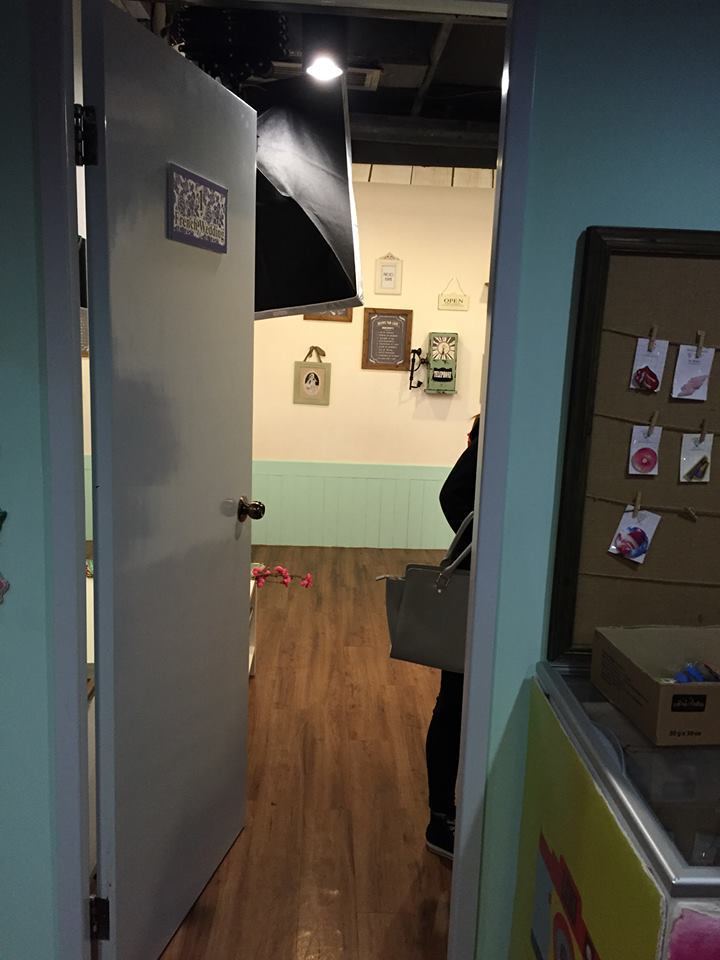 | ||
Selfie studio is a new type of entertainment, which has become more popular in recent years throughout the world, especially in Hong Kong. The selfie studios operate similarly as traditional photographic studios, with cameras and lighting. However, photos are not taken by skilled photographers but customers themselves. A Bluetooth remote control is used to take photos and thus, the whole process is self-controlled. Selfie studios provide customers with a private environment to express themselves at a comparatively low cost.
Contents
History and Development
The first selfie studio, TakaPhotoo, was set up in New York, United States, in June 2009. The studio is only sixty square meters large with eight filming rooms at the time. In 2013, the studio started to operate under franchise and expanded to other countries, and it began to draw attention from people.
The selfie studios have been set up globally in places like Beijing, Shanghai, and Vancouver. The trend continues to spread to even Europe. They started to appear in Hong Kong in late 2013. About thirty selfie studios have been set up in recent years and this successfully becomes a popular activity among the youth.
Features
A selfie studio usually consists of three to four rooms with different themes. Each room provides different backdrops, props and accessories for customers to choose from. A professional camera, two big screens for photo viewing and lighting are set up like traditional studios. Customers can enjoy the service by each paying a small fee with regard to the size of the group. Typically, lower prices are provided for larger groups. After a briefing on the operation of apparatus, a photo taking session will start with the use of the Bluetooth remote control. The customers can get all the photos afterwards by downloading them to USB storages. They then, can freely select the costumes they desire ranging from cartoon characters and animals, to wedding dresses and traditional garments. The customer base mainly consists of females, teenagers, families who want to capture precious moments in their lives.
Improvement
In order to enhance their competitiveness and add novelty value to existing customers, selfie studios regularly change the theme of their shooting rooms according to the customers’ preferences and tastes. New props and backdrops will be provided. Festivals and foreign countries’ sceneries are some common themes. Some studios even try to improve their business by the provision of new services, for instance, renting out the studio for parties, offering discounts and holding selfie competitions.
Positive and Negative Impact
Customers can dress in whatever ways they like and take as many photos until they are satisfied. Therefore, posting those photos on social networking platforms like Facebook and Instagram has become a prevalent phenomenon. This behaviour, as much as we can observe, is exceptionally common in Hong Kong. However, it may lead to different impacts.
Positive
The selfie studio allows customers to take group selfies with 2-10 people. It turns the solo activity into an opportunity for people to gather with their friends and allows them to capture the best moments in life. Also, selfie provides customers with a platform to show and appreciate themselves and this can enhance their self-esteem. The quality of the selfie shoots in studios with lighting and professional cameras are better than those taken with mobile phones. Thus, people can acquire even more self-confidence and peer acceptance by sharing the photos on social networking site. Customers can create different images of themselves with the use of props and costumes. This does not only allow the customers to bring their creativeness into full play, but also allows them to express their ideal selves through the selfies.
Negative
According to a research conducted in London, those who are habitual selfie takers are prone to having low self-esteem. With the help of props, costumes and professional cameras, customers can take as many photos as they want until their ‘perfect looks’ are captured. Some people will then post those photos onto social networking sites in order to get ‘likes’. In case of addiction, they will always check the number of ‘likes’ gained by the photos after their upload because they have paid a lot of effort in choosing photos and writing captions. In other words, they care much about their success in catching their friends’ attentions. They may get depressed if the ‘likes’ do not meet their expectations and come up with reasons to explain for the little number of ‘likes’, for instance, they are not pretty enough.
Dr. David Houghton, who is the lead author of a study in UK said that “people, other than very close friends and relatives, do not seem to relate well to those who constantly share photos of themselves”. Therefore, being addicted to posting selfies may harm people’s real-life relationships. People may want to post the photos taken in selfie studios onto social networking sites for sharing. However, the more frequent selfies are posted, the higher the chance for intimacy to deteriorate according to the study. Therefore, sharing photos taken in selfie studios may pose harm to interpersonal relationships.
